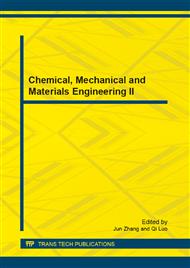p.513
p.517
p.523
p.528
p.532
p.536
p.541
p.545
p.553
Hand/Eye Calibration Using 3D-3D Correspondences
Abstract:
In industrial application, robots do the operations that have predefined location taught by teaching pendant. Recently, sensors including camera and laser range finder are used together with robot to expand the capabilities of the robot. Hand/eye calibration is the first necessary step to transform sensor based measurements into the robot coordinate system. Traditional hand/eye calibration algorithm used known robot motions. Kinect is used as the 3D sensor and chessboard markers are attached on the robot’s arm. In this paper, we solve hand/eye calibration using 3D-3D correspondences.
Info:
Periodical:
Pages:
532-535
Citation:
Online since:
May 2013
Authors:
Keywords:
Price:
Сopyright:
© 2013 Trans Tech Publications Ltd. All Rights Reserved
Share:
Citation:


